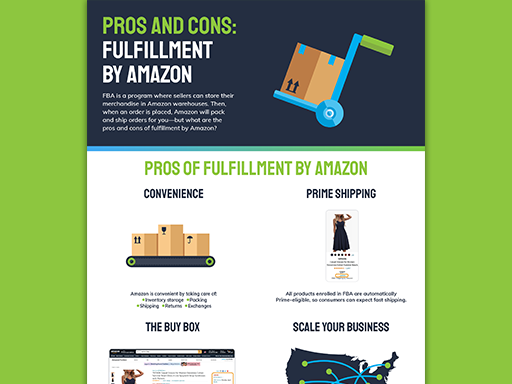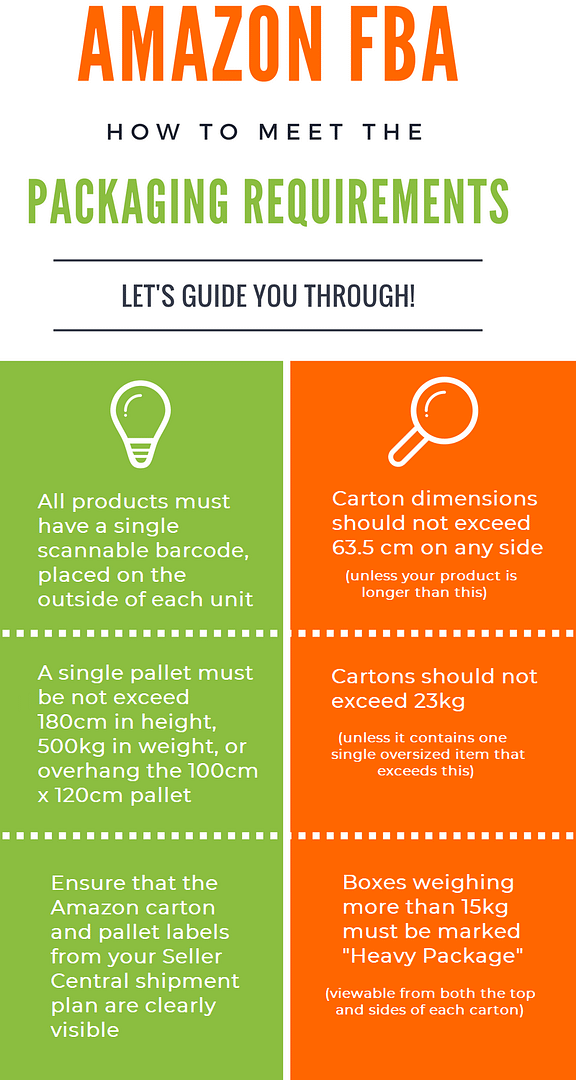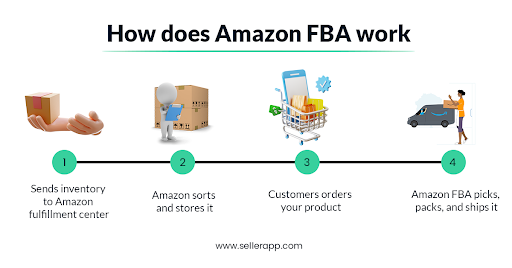Unlock the secrets to successful Amazon FBA box packing with these expert tips that will boost your sales instantly!
Table of Contents
- Introduction to Amazon FBA
- Understanding Amazon FBA Box Requirements
- Proper Label Placement on FBA Boxes
- Fulfilling FBA Labeling Requirements
- Packing and Shipping Guidelines
- Decoding Amazon FBA Fees
- Maximizing Efficiency with FBA
- Common Mistakes to Avoid
- Additional Resources for Amazon FBA
- Summary of FBA Box Tips
- FAQs
Introduction to Amazon FBA
Have you ever wondered how businesses manage to ship their products so efficiently to customers all around the world? Well, that’s where Amazon FBA comes in! In this section, we will explore what Amazon FBA is all about and why it’s essential for sellers like you. So, let’s dive in and discover the magic of Amazon FBA!
Amazon FBA stands for Fulfillment by Amazon. It’s a service provided by the e-commerce giant, Amazon, that allows sellers to store their products in Amazon’s fulfillment centers. When a customer places an order, Amazon takes care of picking, packing, and shipping the product on behalf of the seller. This means sellers can focus on creating great products and growing their businesses, while Amazon handles the nitty-gritty of logistics.
Whether you’re a small business owner or a budding entrepreneur, Amazon FBA can be a game-changer for your business. By leveraging Amazon’s vast network of warehouses and delivery infrastructure, you can reach customers far and wide without worrying about the hassles of storage and shipping. Now that you know what Amazon FBA is all about, let’s explore some essential tips to make the most out of this service!
Understanding Amazon FBA Box Requirements
When it comes to using Amazon FBA (Fulfillment by Amazon) services to sell your products, there are specific guidelines you need to follow to ensure your items are properly packaged and shipped. Understanding Amazon FBA box requirements is essential to avoid issues with your shipments. Let’s delve into the key aspects of these requirements.
Size and Weight
Amazon has strict rules regarding the size and weight of the boxes used for FBA shipments. It’s important to adhere to these guidelines to prevent any delays or extra charges. Make sure your boxes are within the specified dimensions and weight limits set by Amazon.
Material and Strength
The material and strength of the boxes you use for FBA shipments are crucial for the safe delivery of your products. Amazon requires that you use corrugated boxes for shipping, as they provide the necessary durability to withstand the handling and transit process. Ensure that your boxes are strong enough to protect your items during transportation.
Proper Label Placement on FBA Boxes
When it comes to shipping items through Amazon FBA, proper label placement on your boxes is crucial. Ensuring that your labels are positioned correctly can help streamline the shipping process and prevent any hiccups along the way. Let’s delve into the specifics of where and how to place your shipping labels on FBA boxes.

Image courtesy of omnitail.net via Google Images
Finding the Right Spot
One of the key factors to consider when placing shipping labels on FBA boxes is visibility. Labels should be placed on the largest flat surface of the box to ensure that they are easily detectable by scanners. The top or one of the sides of the box are generally ideal spots for label placement. Avoid placing labels on seams, corners, or areas with print or graphics, as this can interfere with scanning and cause delays in processing.
Avoiding Labeling Mistakes
It’s important to adhere to Amazon’s guidelines when it comes to labeling your FBA boxes. Make sure that the labels are securely affixed to the box using clear packaging tape to prevent them from falling off during transit. Additionally, avoid covering important information on the box with the label, such as product details or handling instructions. Double-check that the label is placed straight and flat to avoid any scanning errors.
Fulfilling FBA Labeling Requirements
When preparing your FBA shipments, it’s essential to include specific information on your labels to ensure smooth processing and delivery. Each label should contain details such as the product SKU, ASIN, quantity, and expiration date (if applicable). Additionally, it’s crucial to include the FNSKU barcode to uniquely identify your products within Amazon’s system.
Label Formatting
Proper formatting of your FBA labels is key to meeting Amazon’s labeling requirements. Make sure that the text on your labels is clear, legible, and sized appropriately for easy scanning. Use a font size of at least 16 points for essential information to ensure readability. Avoid covering any crucial details with tape or other labels to prevent scanning issues during processing.
Packing and Shipping Guidelines
When it comes to packing and shipping items for Amazon FBA, following the guidelines is crucial to ensure that your products reach their destination in perfect condition. Let’s delve into some dos and don’ts to make your packing process efficient and effective.

Image courtesy of www.shippo.co.uk via Google Images
Securing Items Inside the Box
It’s essential to secure your items inside the box to prevent any movement during transit. Use packaging materials like bubble wrap, packing peanuts, or air pillows to cushion your products and keep them from shifting. Make sure to fill any empty spaces in the box to avoid damage due to bouncing around.
Weather-Proofing
Weather can be unpredictable, so it’s crucial to take steps to protect your items from any potential damage. Consider using waterproof packaging or plastic bags for individual products to shield them from moisture. Additionally, ensure that your box is sealed securely to prevent any water from seeping in during transit.
Decoding Amazon FBA Fees
In order to successfully sell products through Amazon’s FBA program, it’s essential to understand the various fees associated with this service. By managing these fees effectively, sellers can optimize their profits and ensure a smooth selling experience.
Types of FBA Fees
Amazon FBA fees encompass a variety of charges that sellers need to be aware of. These fees can include fulfillment fees, storage fees, referral fees, and more. It’s crucial to understand each type of fee to accurately calculate expenses and pricing strategies.
Keeping Costs Down
One way to maximize profits when utilizing Amazon FBA is by finding ways to minimize fees. This can be achieved through strategic inventory management, optimizing packaging to reduce shipping costs, and utilizing Amazon’s tools and resources effectively. By staying informed and proactive, sellers can keep costs down and increase their bottom line.
Maximizing Efficiency with FBA
When using Amazon FBA services, maximizing efficiency is key to running a successful business. By implementing smart strategies, you can reduce time and expenses, ultimately improving your bottom line. Let’s dive into some tips to help you streamline your FBA operations.

Image courtesy of lab916.com via Google Images
Inventory Management
Effective inventory management is crucial for any FBA seller. By keeping a close eye on your stock levels, you can avoid long-term storage fees and ensure that you have enough inventory to meet customer demand. Consider using inventory management tools to track your products and set up automated reorder alerts to replenish stock when needed.
| Box Tip | Description |
|---|---|
| Use Sturdy Boxes | Choose durable cardboard boxes to protect your items in transit. |
| Avoid Overpacking | Avoid placing too many items in one box to prevent damage during shipping. |
| Use Bubble Wrap | Wrap fragile items in bubble wrap to provide cushioning and prevent breakage. |
| Label Clearly | Label each box with its contents for easy identification and organization. |
| Use Packaging Tape | Securely seal boxes with packaging tape to prevent them from opening during transit. |
Streamlining Packing Processes
Streamlining your packing processes can make a significant impact on your efficiency. By organizing your packing station and prepping all necessary supplies ahead of time, you can speed up the packing process and meet your shipment deadlines without any hiccups. Additionally, consider using standardized packaging materials to simplify the packing process further.
Common Mistakes to Avoid
When it comes to using Amazon FBA services, there are some common mistakes that new sellers often make. By steering clear of these errors, you can ensure a smooth and successful experience. Here are a couple of pitfalls to watch out for:
Mislabeling
One of the biggest blunders that can happen with FBA shipments is mislabeling. Mislabeling items can lead to lost inventory, delayed shipments, and even extra fees. To avoid this mistake, always double-check your labels before sending out your packages. Make sure the information is accurate and placed in the correct spot for easy scanning and identification by Amazon’s systems.
Ignoring Guidelines
Amazon has clear guidelines when it comes to packaging, labeling, and shipping items through FBA. Ignoring these guidelines can result in your items being rejected or additional fees being incurred. It’s crucial to take the time to understand and follow these rules to ensure that your items reach their destination safely and on time. By adhering to Amazon’s guidelines, you can prevent unnecessary headaches and keep your selling experience hassle-free.
Additional Resources for Amazon FBA
For those looking to delve deeper into the world of Amazon FBA, here are some additional resources to enhance your understanding and success:

Image courtesy of www.sellerapp.com via Google Images
Online Tutorials and Guides
If you’re a visual learner or prefer step-by-step instructions, Amazon provides comprehensive online tutorials and guides to walk you through the FBA process. These resources can help you master everything from creating shipments to managing your inventory effectively. Be sure to take advantage of these valuable resources to optimize your FBA experience.
Seller Forums and Communities
Joining seller forums and communities is a fantastic way to connect with other FBA sellers, share experiences, and seek advice. These platforms offer a wealth of knowledge and support from experienced sellers who have navigated the ins and outs of Amazon FBA. Engaging with these communities can provide insights, tips, and tricks that you may not find elsewhere. It’s a great way to learn from the collective wisdom of the FBA community.
Summary of FBA Box Tips
This section serves as a quick recap of the essential Amazon FBA box requirements and tips discussed earlier to help sellers succeed in their online businesses.
Understanding Amazon FBA Box Requirements
When preparing boxes for Amazon FBA shipments, it’s crucial to pay attention to the size and weight specifications set by Amazon. Your boxes should be within the approved dimensions to ensure smooth processing and delivery.
Additionally, the material and strength of your FBA boxes matter. Opt for sturdy materials that can withstand the rigors of shipping to protect your products en route to customers.
Proper Label Placement on FBA Boxes
Placing shipping labels on FBA boxes may seem simple, but it’s essential to find the right spot for visibility and scanning purposes. A well-placed label can expedite the shipping process and prevent delays.
Avoid common labeling mistakes by ensuring that labels are securely attached to your boxes and placed in the designated areas. This simple step can prevent misroutings and inaccuracies in tracking.
Fulfilling FBA Labeling Requirements
Include all the necessary information on your labels, such as the shipper and recipient details, to comply with Amazon’s labeling requirements. Omitting crucial information can lead to issues with your shipments.
Follow the correct label formatting guidelines to ensure that your labels are easily readable and scannable by Amazon’s systems. This small detail can make a big difference in the efficiency of your shipping process.
Packing and Shipping Guidelines
Secure items inside your FBA boxes to prevent damage during transit. Bubble wrap, packing peanuts, and air pillows are excellent options for keeping your products safe and secure on their journey.
Weather-proofing your packages is essential to protect your items from external elements during shipping. Use plastic wrap, poly bags, or waterproof tape to shield your products from moisture and humidity.
FAQs
Why are Amazon’s FBA box requirements so strict?
Amazon’s FBA box requirements may seem strict, but they are in place to ensure that your products are protected during shipping. By following these guidelines, you can minimize the risk of damage to your items and provide a positive customer experience.
Can I reuse old boxes for FBA shipments?
Amazon prefers that you use new boxes for FBA shipments to maintain quality and protection for your products. However, if you do reuse boxes, make sure they are in good condition with no visible damage or wear. It’s important to ensure that the box is sturdy enough to withstand the shipping process and protect your items.
